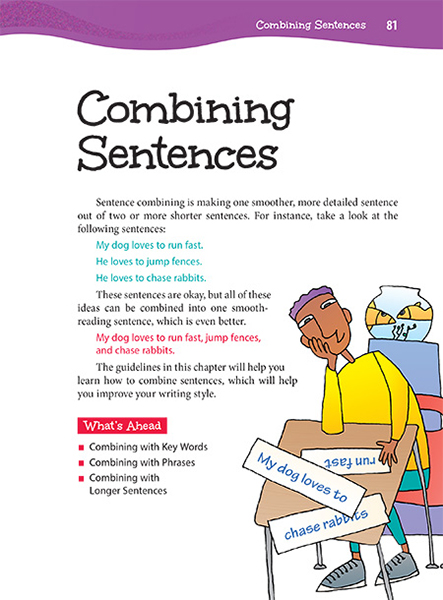Page 081 from

Start-Up Activity
Have students write five short sentences about a topic currently being studied. Then ask them to combine some or all of the short sentences into longer ones. They should try to connect the sentences together with a comma and an and, but, or, nor, for, so, or yet. Display some of these sentences for discussion.
Think About It
“It’s good practice to imitate your favorite writers. All writers do that at first.”
—J. Scieszka